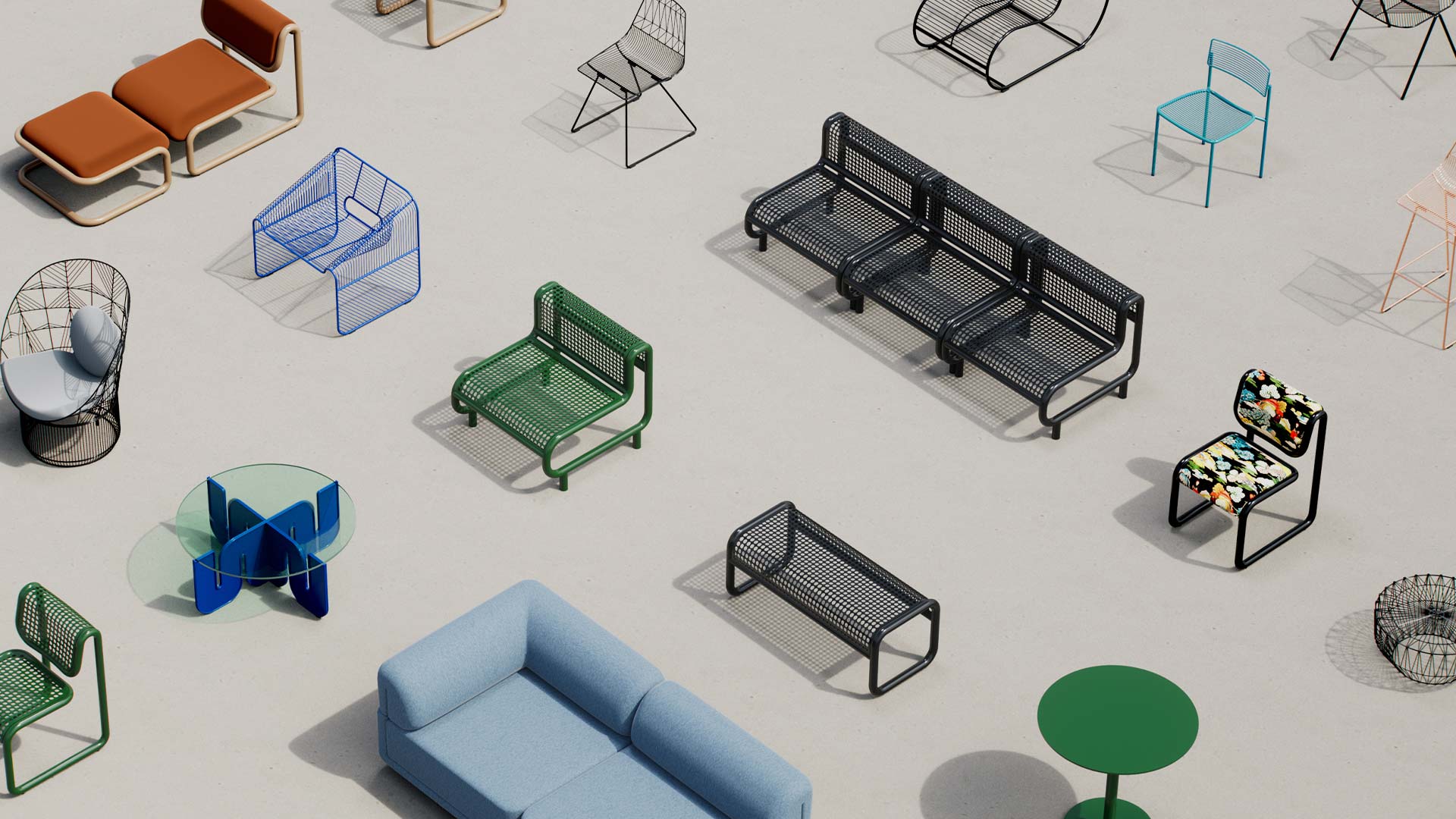Studio UNLTD is an award winning design and concept firm. They recently won the Restaurant Design Award with Bavel, in Downtown LA.
We are super excited that the Company’s Director and Founder, Greg Bleier, told us more about the Design Process behind the projects, trends in commercial interior design and his personal inspirations:
Bend: Congratulations on winning the 2018 Restaurant Design award with Bavel in Downtown LA! The unique space shows middle eastern vibes and a mix of modern and traditional styles. What is the idea behind the design concept of Bavel?
Greg: The idea was to essentially do just that; create a contemporary restaurant which eschews the clichés of middle eastern restaurant design, by bringing it more Mediterranean with brighter lighter tones with nods and hints to the past and coastal wear. Bavel is the Hebrew word for Babel and our plant sculpture is our ode to the hanging gardens of Babylon.
Bend: The planters hanging from the ceiling at Bavel truly stand out! How important is the role of plants for the interior of a Restaurant?

Greg: I would say at this point, they have almost taken over the restaurant! The initial design concept did not have the plant sculpture in it and were hoping to create a dramatic and large latticework sculpture which would cast alluring shadows as the days transitioned into night. This evolved into the plants, which were also a reference to some of strange aspects of Jerusalem, where natures finds away to grow in cracks and openings in building edifices.

Bend: How can we imagine the design process when you work with a client? How do you transform your client’s ideas?
Greg: We are really nothing without our clients. They are all dreamers and we love that. We know that at the end of the day, we are building strong support structure for their venture so it’s critical that it dovetails to their concept in order for the restaurant to obtain complete success. Now this doesn’t mean that they always are 100% clear on what they want, we sometimes have to coax out those nuggets in order for us to find the perfect elements to latch on to and create. We like to think that we know what you want, even if you seem to not know. You’d be surprised where inspiration comes from. Customers don’t come for us, they come for the food/ drinks and service, design, etc. are all bonus points. When they all hit though, like Bavel (and Bestia) it’s magic.
Bend: What has been the most challenging project so far and why?
Greg: Honestly, Bavel is up there and for me, probably at the top. All jobs present interesting and different challenges, but Bavel was a very long process and was placed in a building that put up several hurdles out of the gate. The building was a 60-year-old unreinforced masonry warehouse, with a very humble aesthetic. It was certainly not designed for anything but storage and loading/ unloading onto trucks. That was it. Very basic and set 42” off the ground. So, in essence, Bavel was a ground up restaurant which sits at an important intersection in the midst of LA’s Arts District. The design itself, may feel effortless and simple, but I believe that is also what made it so challenging; there was a lot of care and coordination that needed to happen in order to pull it off. Just the patio alone was one of the most intricate design puzzles that we’ve created.

Bend: And which one is your favorite project so far? We are sure it’s hard to pick just one!
Greg: Yeah. Way to put me on the spot! If I had to pick one, I think it would be Tatsu Ramen in NYC. It’s a very clear design and program which packs a lot into a small space without it feeling overwhelming while being very on-brand for the client.
Bend: Could you tell us key elements on creating an appealing interior for commercial spaces?
Greg: Honestly, people like things that they can relate to. Whether it’s referential to a period or place. Having that clear concept always seems to work best; a story to tell. Then the rest falls in to place more-or-less seamlessly. People want to be comfortable and engaged with their surroundings without actually knowing it; textures, pattern, color, furnishings and chiefly, lighting all have to work in concert. If you create tension and a competition between elements because, for instance, you like them individually (not because they work) the design lets you down.
Bend: What inspires you? Where do you get your inspiration from?
Greg: So much really. There is so much in this world to find inspiration in if you are paying attention. Take a walk without your phone and you will see. Nature is always a root of inspiration as it lends a soul to a design, while people and creativity can make it sing. I get inspired by objects and other designers too! We are all here to push one another.

Bend: What is the biggest mistake you see in other Restaurant designs?
Greg: Not taking lighting seriously is far and away the number one restaurant failing. It is so very important to the experience and to the product. I can’t tell you how many $$$$ restaurants have second-rate lighting which really is unfortunate. Poor lighting can render everything in the room flat or to dim or too uniform. It ruins erstwhile good design and pedestrianizes beautiful food.
Bend: What other city besides LA is your favorite for great interior of food and beverage spaces?
Greg: New York, London, Barcelona, Portland, Sydney to name a few.
Bend: Can you see a significant trend in interior architecture for restaurants?
Greg: It all moves so fast. Trends used to have a shelf-life, but not anymore. One or two years and then on to the next. The late 70’s / early 80’s trend in Bohemian vibes and indoor plants are at their tail end now, along with the obsession with line art and monochromatic pastels.


